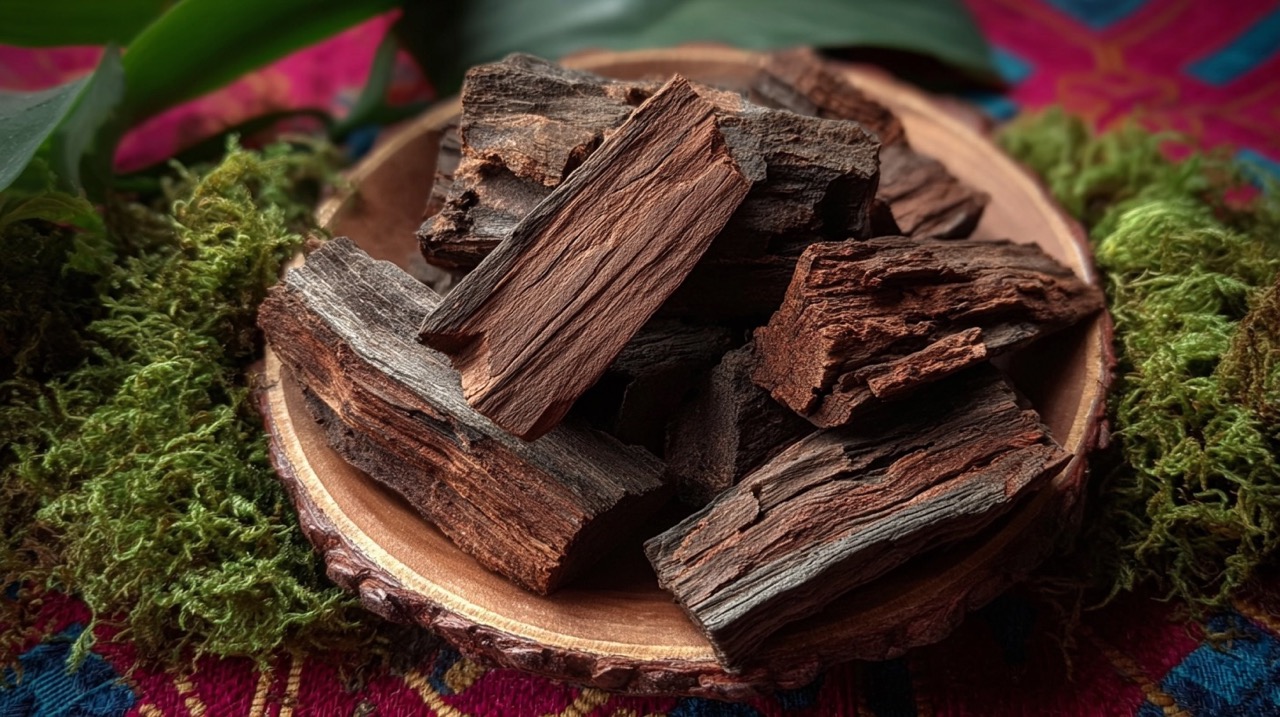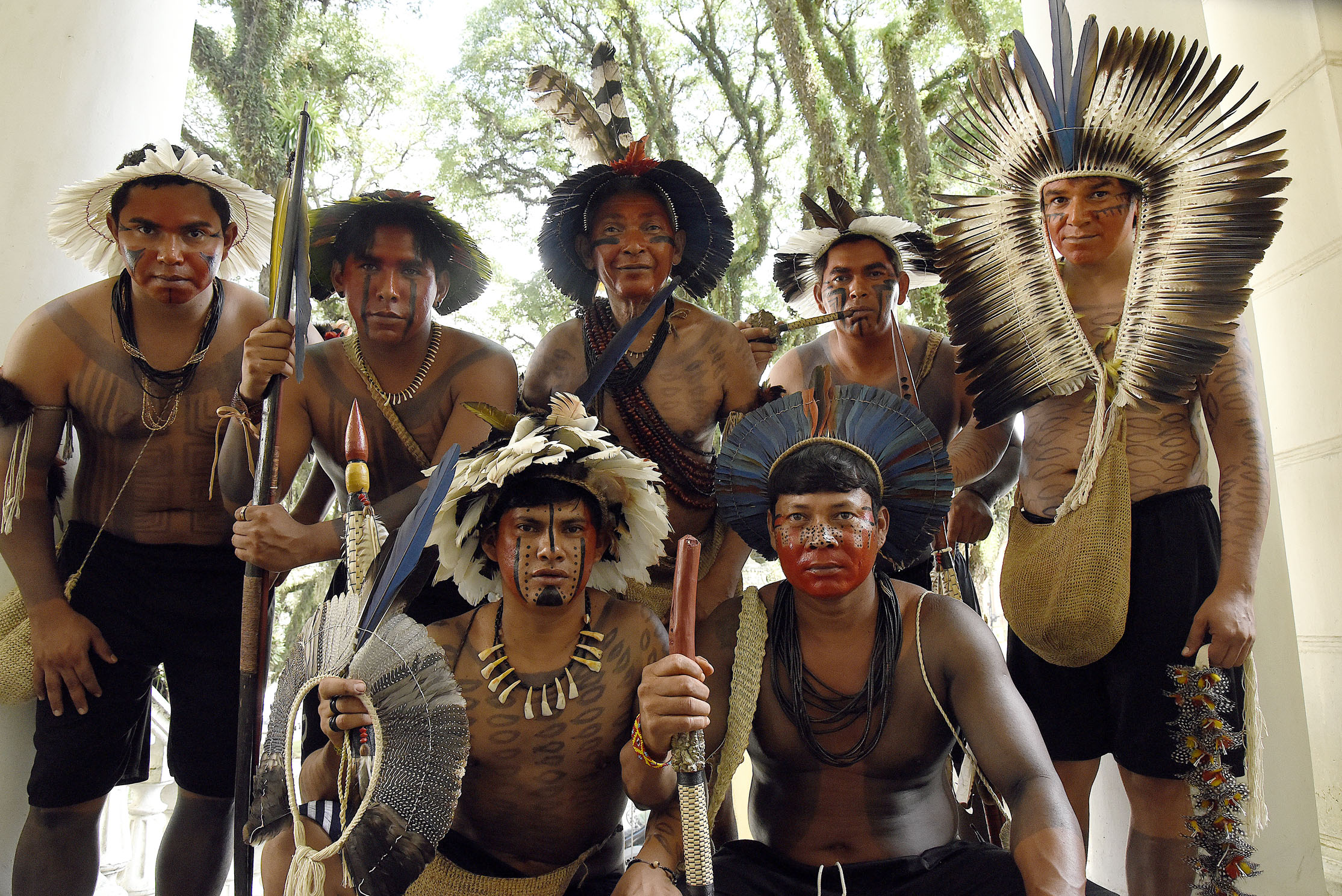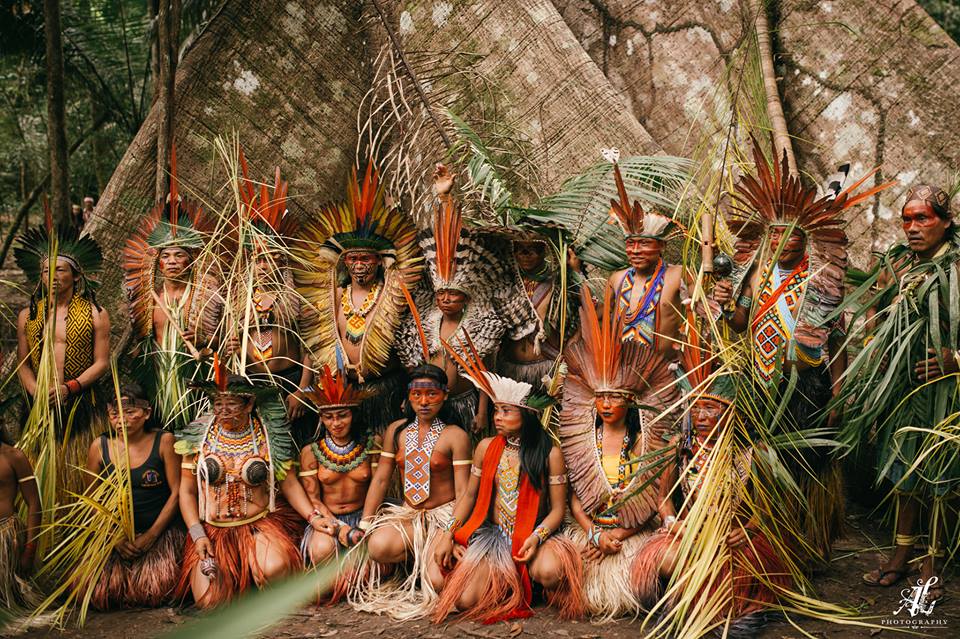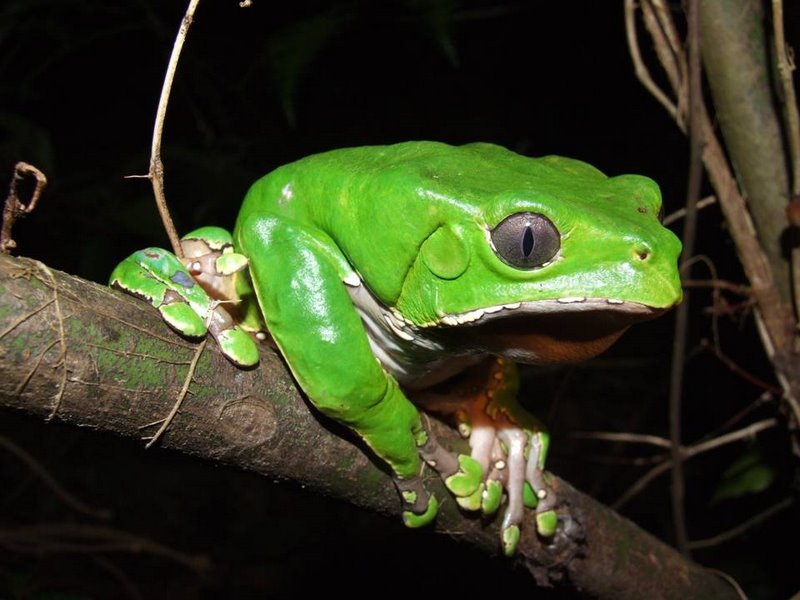
Kambo frog vaccine medicine
Kambô, also known as the “frog vaccine,” is the cutaneous secretion of the frog Philomedusa bicolor, native to the Amazon rainforest. Originally, the use of kambô is associated with the native concept of “taking out panema.” Panema can be translated as “bad luck,” especially in hunting, but also in love.
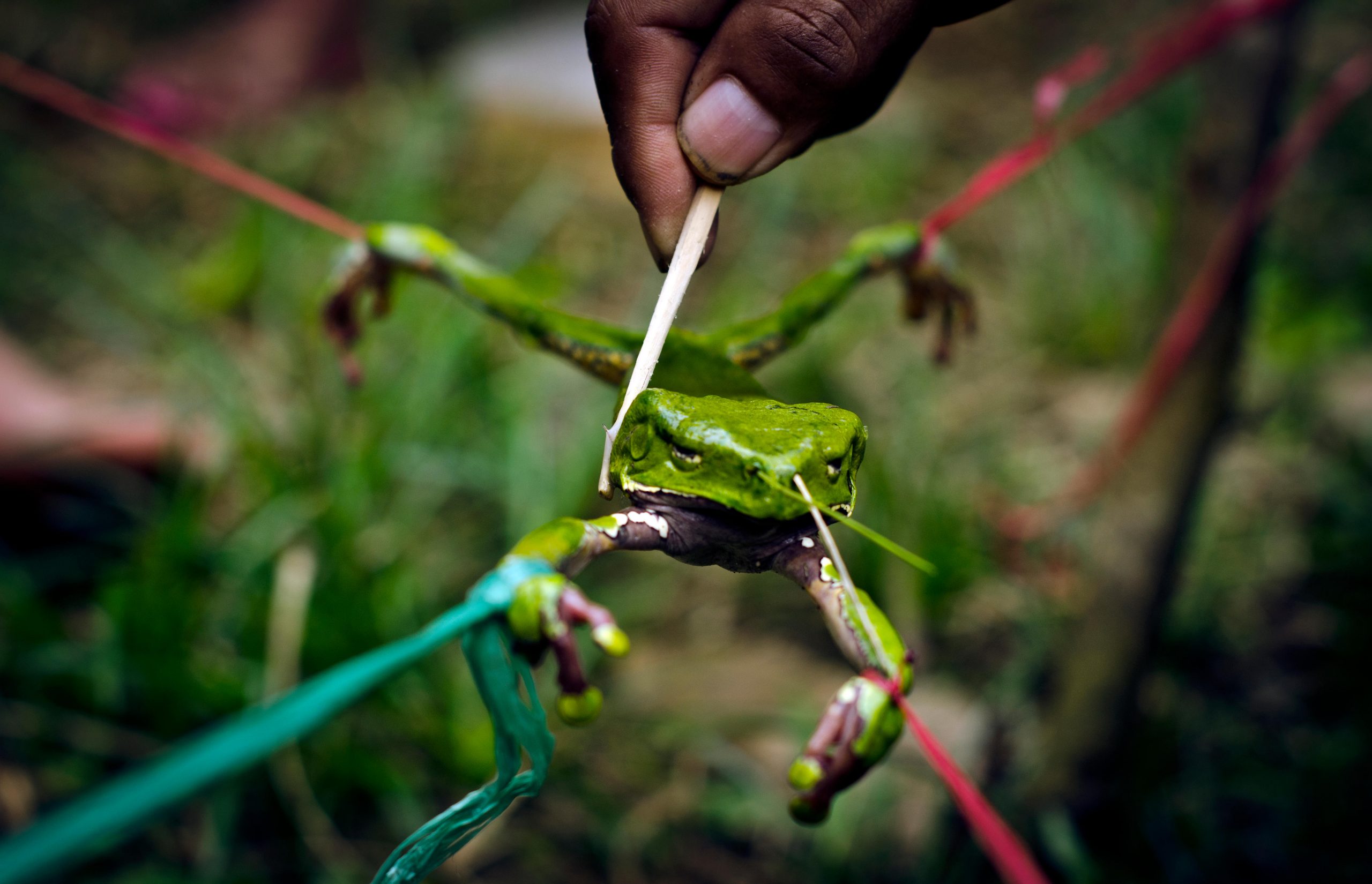
The secretion is applied as follows: Early in the morning (recommended even before sunrise), the one who will receive the application should be fasting and drink only water or caiçuma (fermented cassava drink that facilitates vomiting). The person doing the application will then use a specific type of vine (known in this part of Brazil as cipó titica), setting it on fire it so that it is red-hot. With the embers at the tip of this vine, small burns are made in the form of small “points” on the skin. The burned skin is removed, and the secretion, previously hydrated with water, is superficially inserted at these points. The number of points can vary greatly. From just one or two points, to over three hundred, as reported by the Noke Koi people, who are frequent users of kambô. Most commonly, however, these points number anywhere from three to, at most, twenty, especially among non-Indians.
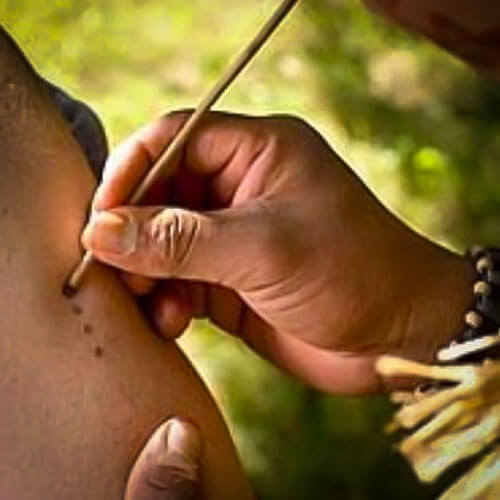
The first reaction is an increase in blood pressure and heartbeat. The face is usually swollen, especially the lips, which gives a very unusual appearance. Next, the blood pressure seems to fall sharply. Some people even faint. The expected effect is that the person vomits bile, yellowish or greenish; but not all vomit. There is a rest period that can range from a few hours to a few days, and then the effect is usually of a feeling of great physical well being.
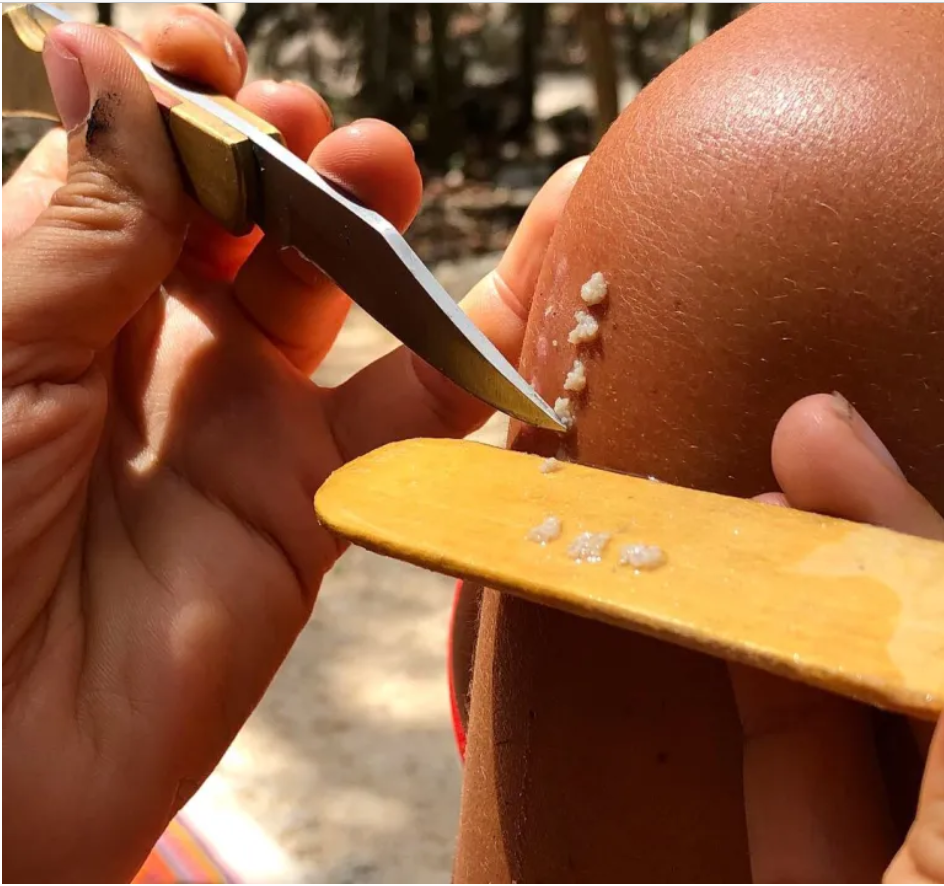
I met kambô in the late 1990s; not through an indigenous person, but through former rubber tapper Francisco Gomes Muniz, an Amazonian mestizo with extensive forest experience. Through a set of happy coincidences, Francisco discovered an intriguing parallel between the native concept of misfortune in love (panema) as a consequence of “clogging the heart” and the contemporary medical concept of clogged arteries that can be treated by a doctor with catheterization. Following this concept, Francisco started applying kambô to people with various health complaints, and, in most cases, improvement or total cure was reported. Since then, the use of kambô has been cited as a direct cause of cure or amelioration of a growing body of diseases by the patients themselves, but without its effectiveness having been proven in terms of modern medical science. However, it is important to note that caution is necessary in evaluating these claims.
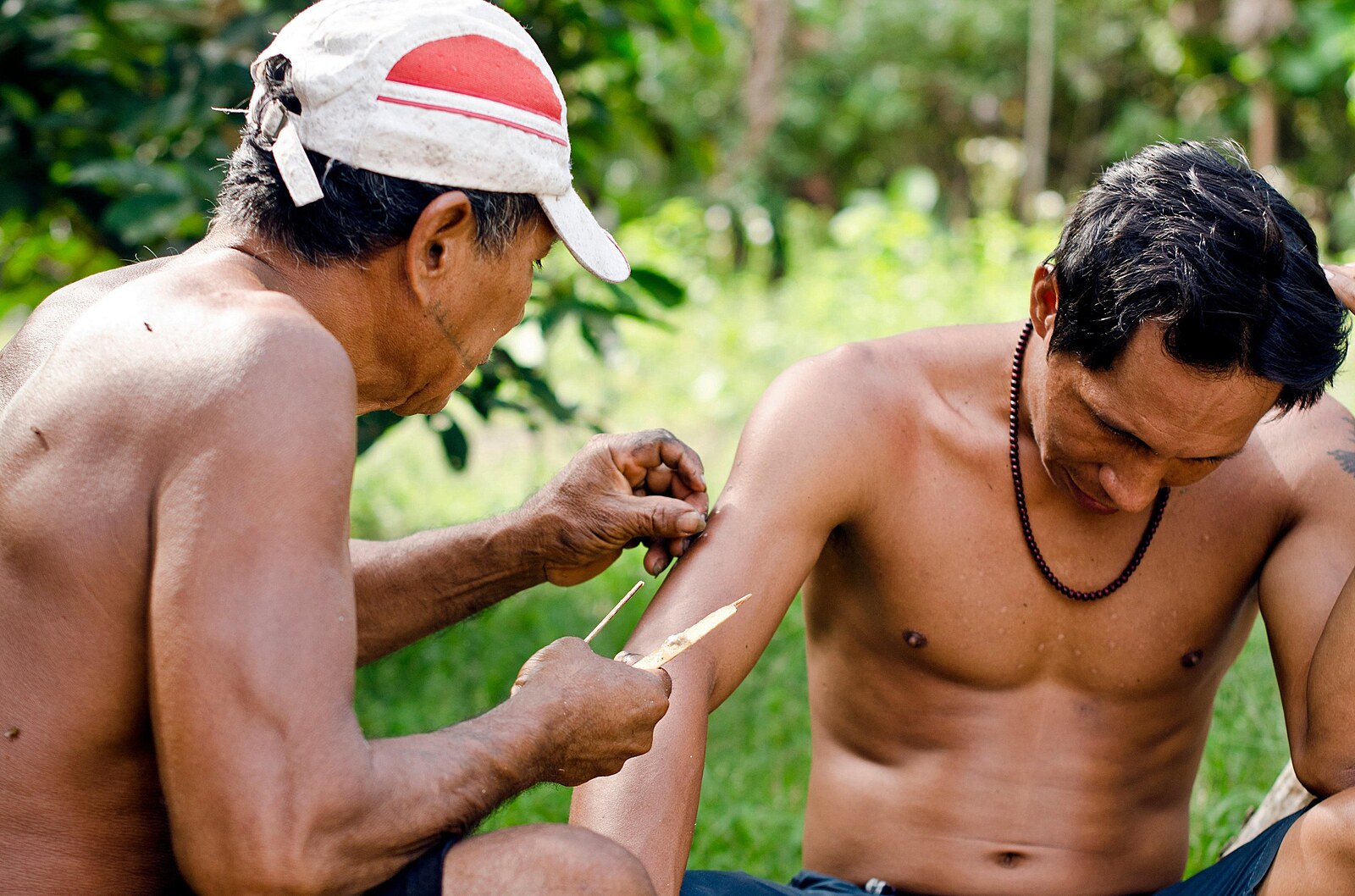
If, on the one hand, kambô can indeed heal assorted diseases, there is also an increase in reports of deaths associated directly or indirectly with its use. Although the Noke Koi have said that, historically, kambô has never caused a death, with its use expanding each year beyond the geographical boundaries where it was confined for centuries or millennia, the news of deaths related to its use is increasing. There is not enough research to indicate why this may be happening. Perhaps it is only due to the increased sample size and exposure to people with unknown health histories. One empirically-based warning is that kambô can be dangerous for people with a history of heart problems. Another point is that the dosage does not follow very objective criteria. The person applying the kambo will use their intuition to determine the dose of each patient. An experienced applicator is also able to moderate the effect of the vaccine by using water at the application site. Often, people who offer this medicine in large centers are not sufficiently trained in these subtleties.
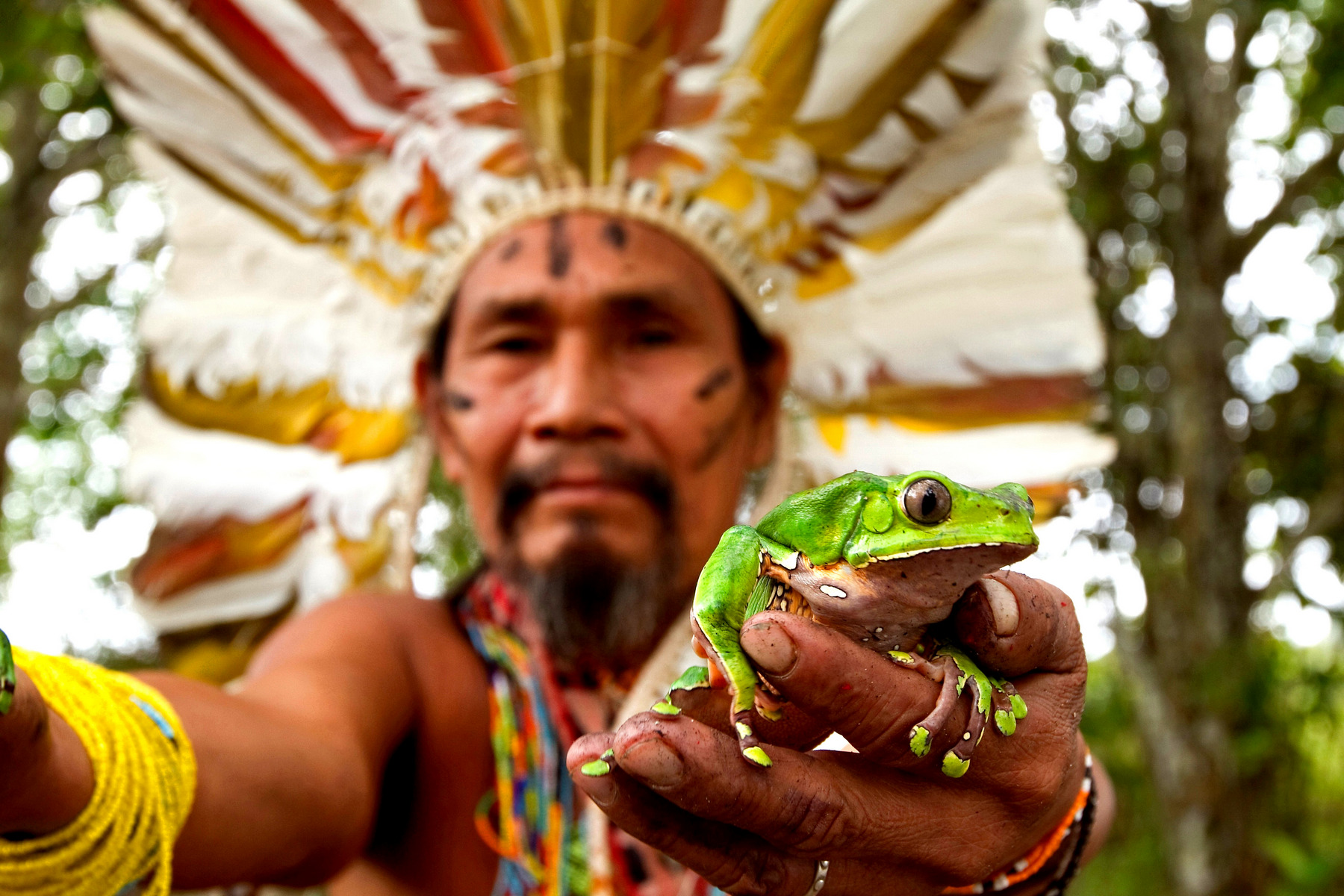
Traditional use brings yet another noteworthy component: The natives who make traditional use of kambô attach great importance to those who apply it. In the native concept, the substance is only part of what is applied; the other part refers to the qualities of the applicator being a good hunter, a good worker or, eventually, a good healer, who wants to pass on these qualities to the recipient. In the native conception, the substance is a vehicle for such qualities to be transmitted, and imprinted, on the recipient’s body.
On the internet, the reader can find some scientific works about kambô; see here and here.
Source: chacruna.net
We don't claim that this product has any healing properties. This natural product is offered for its ethnographic and historical value and is supplied without express or implied fitness for a particular purpose. All information provided is for educational, scientific, ethnographic and historical research purposes only. All products are sold as botanical samples only with no express or implied claims for a specific purpose or use. The use and use of this product is at the discretion, responsibility and risk of the customer.
Chuchuhuasi - Amazonian tea from Peru
Perhaps nowhere on Earth contains such a concentrated wealth of natural healing resources. It's truly a paradise for shamans, herbalists, and traditional healers. Yes, we're talking about the Amazo...
Fulni-ô tribe
Meet the Fulni-ô: Guardians of Sacred Tradition in Brazil's Northeast
The Fulni-ô is the only indigenous group of Northeastern Brazil that was able to keep its language – the Ia-tê – alive an...
The Kaxinawa Tribe (Huni Kuin)
The Kaxinawá (Huni Kuin) people are the original inhabitants of Brazil and Peru. Their cities lie along the Purus and Curanja rivers in Peru and the Tarauacá, Jordão, Breu, Muru, Envira, Humaitã an...
How to Use Rapé: A Step-by-Step Guide
- Start with a pea-sized amount of Rapé in your palm. Consider a smaller amount if you are sensitive, have low pain tolerance, or if you’re new to Rapé. It is better to be underwhelmed and then ...

